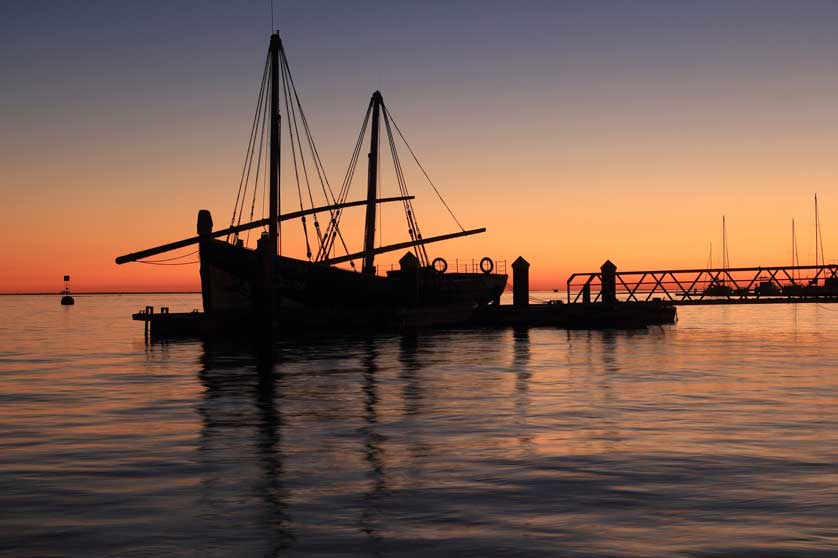Palace of Sintra (Palácio Nacional de Sintra)
The Palace of Sintra (Palácio Nacional de Sintra), in Sintra, west of the capital Lisbon, is one of the town's main attractions.
 |
| Palácio Nacional de Sintra |
History
Sintra was previously a Moorish town before it was retaken by Christian forces in 1147 and the site of the Palácio Nacional de Sintra is thought to have been a Moorish fortress. Nothing, however, remains of the early Moorish and Christian buildings on the site.
The structures we see today were built from the 14th and 15th centuries on starting with work by King Dinis I and King John I. Some of the famous rooms in the Palácio Nacional de Sintra include: the Swan Room (Sala dos Cisnes), the Magpie Room (Sala das Pegas) and the Arab Room (Sala dos Árabes).
 |
| Sala dos Cisnes |
Swan Room
The Swan Room (Sala dos Cisnes) and the Magpie Room (Sala das Pegas) are named after the paintings of the two birds on the respective ceilings of the palace. The Magpie Room (Sala das Pegas) was a meeting room where the monarch received notable visitors.
 |
| Sala dos Brasões |
Sala dos Brasões
One part of the Palace of particular note is the Blazons Hall (Sala dos Brasões) in its western part. Its decorations are overwhelmingly heraldic. The ceiling, with its octagonal dome, is its most spectacular feature, with the royal Portuguese coat of arms, framed by a winged dragon, at its very top.
Below it, around the beautifully tiled walls are scores of other coats of arms of the children of the great Dom Manuel I, and below it, of 72 other noble clans.
 |
| Magpie Room (Sala das Pegas) |
Manueline Expansion
Further expansion of the Palácio Nacional de Sintra was undertaken by King Manuel I from 1497 to 1530, financed by the wealth generated by the so-called Age of Discoveries, as Portuguese explorers such as Bartolomeu Dias and Vasco da Gama expanded Portugal's trade routes with South America and Asia.
Features of this new "Manueline" style include azulejos tiles, harking back to the Moorish period, and decorative motifs referencing the new maritime explorations.
Gardens
West of the palace are the gardens extending over several terraces. These include the Araucaria Garden, the Kitchen Garden, the Preta Garden, the Princes' Garden and the Tanquinhos Patio. All have lovely views over the surrounding hillsides. The Preta Garden is marked by a twisting Manueline column.
 |
| Palácio Nacional de Sintra |
Access - Getting There
Palácio Nacional de Sintra (www.parquesdesintra.pt)
Hours: 9.30 am-7 pm (summer)
There are reductions with the Lisboa Card.
From Sintra Station take Scotturb buses 434 or 435.
More on Sintra
Sintra Map
© Portugal Visitor






No comments:
Post a Comment